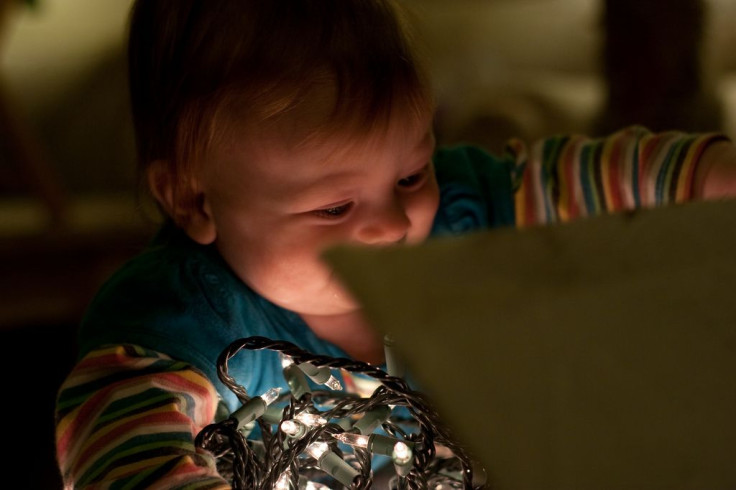There’s Lead In Your Christmas Tree Lights, But Is It Enough To Be A Serious Holiday Health Concern?

The holiday season is synonymous with twinkling, blinking, string lights that we worry may raise our electric bill, but we don't we generally associate with causing long term mental harm. That's what extended time with our family is for. Unfortunately, your typical string of holiday lights may be more harmful to your long term development, or that of your child's, then another round of inappropriate family stories told around the eggnog, because your typical string of holiday lights likely contains lead.
This isn't new information — a CNN study in 2007 found that at least four common brands of lights contained levels of lead that far exceed the Consumer Product Safety Commission's standard for lead limits in products to which children are exposed. Similarly, in a 2008 study in the Journal of Environmental Health, Cornell University Researchers found lead at levels that surpassed the Environmental Protection Agency’s limit for windowsills and floors in all ten of the 10 light sets that they tested. The issue, however, is that it still isn't well known that an evening of the common family activity of stringing lights around the Christmas tree can give a family — particularly children — a significant dose of lead.
The presence of lead isn't accidental. Lead is intentionally applied to the polyvinylchloride (PVC) coating on the wiring of the lights, to prevent the plastic from cracking and crumbling, to protect the string of lights from heat and moisture, and to act as a flame retardant. Alternatives to lead do exist, but they tend to be more expensive. Should you be concerned?
Each year in the United States roughly a quarter million children below the age of six are found to have unsafe levels of lead in their blood. In children early exposure to lead can cause learning disabilities, behavior issues, speech and language impairment, attention deficit disorder and growth issues. In adults, lead exposure can cause fertility problems, high blood pressure, digestive, and nerve disorders. This is the bad news.
The good news, however, is that the actual amount of exposure from our Christmas tree lights is likely low, unless you're the kind to string them up all year long. Your much more likely to be exposed to dangerous amounts of lead from lead paints and contaminated soils. Nevertheless, when it comes to holiday lights, experts say that only adults should handle them, ideally while wearing gloves, and, since lead isn't easily absorbed through the skin that we should make sure to wash our hands before reaching for that cookie.
As pediatrician Philip Landrigan of New York’s Mount Sinai School of Medicine told USA Today in 2010, "In the whole scheme of things, is it a huge risk? No, But what's bothersome about it is that it's so unnecessary, and that safer substitutes do exist." If you're really concerned lights with far lower levels of lead do exist: Swedish retailer IKEA which has to adhere to stricter European safety standards is one noted purveyor.
Published by Medicaldaily.com



























